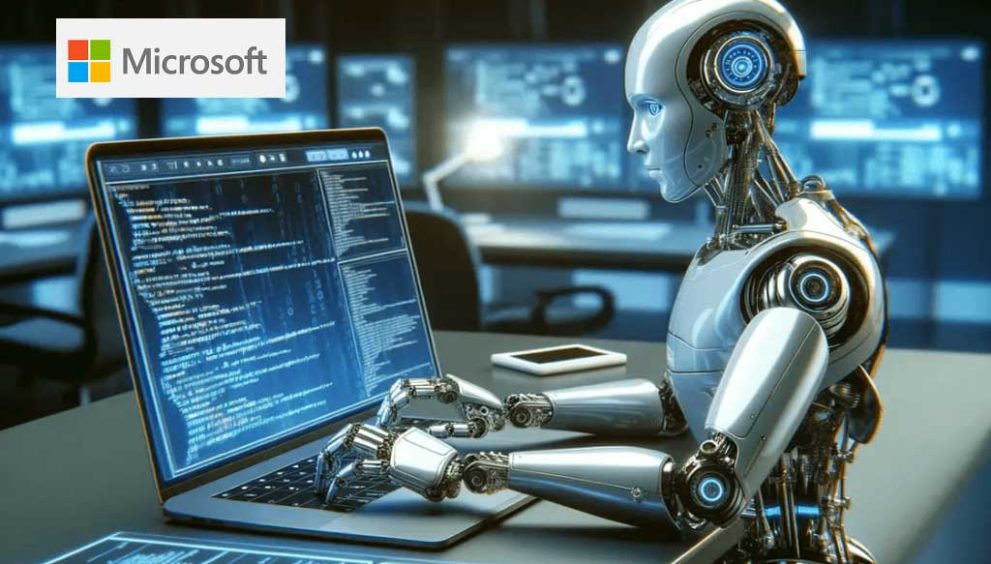Microsoft’s 2025 AI Study: The 40 Jobs Most at Risk and the 40 Safest for American Workers

In July 2025, Microsoft dropped a bombshell study, “Working with AI,” published on arXiv, analyzing 200,000 anonymized Bing Copilot conversations to reveal the 40 jobs most vulnerable to AI and the 40 least likely to be automated. For ClickUSANews readers, this is a must-read for anyone wondering how AI will reshape the American workforce. From tech hubs in California to small-town construction sites, this study offers a clear-eyed look at what’s coming and how U.S. workers can stay ahead. Let’s break it down with a focus on what it means for Americans.
How Microsoft Crunched the Numbers
The study uses an “AI applicability score” to measure how much a job’s tasks align with what AI tools like Copilot can do. It looks at three things:
- Coverage: How often AI is used for a job’s tasks.
- Completion: How well AI handles those tasks.
- Scope: How much of the job AI can take on.
Drawing from the U.S. Bureau of Labor Statistics and the O*NET database, which details job activities, the study is grounded in real-world data. This makes it especially relevant for American workers, whether you’re in a corporate office or a factory floor.
The 40 Jobs Most at Risk: AI’s Big Targets
The jobs most exposed to AI are those with repetitive, structured tasks—think writing, data crunching, or customer support. Here are the top 10 roles Microsoft says are most vulnerable, with U.S. employment numbers for context:
- Customer Service Representatives (2.86 million jobs)
- Writers and Authors (~50,000 jobs)
- Journalists (~30,000 jobs)
- Editors (~100,000 jobs)
- Translators and Interpreters (~80,000 jobs)
- Proofreaders (~10,000 jobs)
- Public Relations Specialists (~270,000 jobs)
- Web Developers (~190,000 jobs)
- Data Scientists (~170,000 jobs)
- Business Analysts (~900,000 jobs)
The list also includes sales reps, market researchers, and software developers focused on routine coding. High-paying jobs aren’t safe either—AI’s ability to handle complex but structured tasks puts even well-paid roles at risk. Microsoft’s own moves, like cutting over 15,000 jobs in 2025 while ramping up AI, show companies are already leaning on these tools to slim down teams. As researcher Kiran Tomlinson notes, “AI can support tasks like research and communication, but it’s not ready to fully replace any job.” Still, fewer workers may be needed as AI takes on more.
The 40 Safest Jobs: Where Humans Still Rule
Jobs that need a human touch, physical skills, or on-site presence are holding strong against AI. Here’s the top 10 list of “AI-light” roles where Americans can feel more secure:
- Phlebotomists (~140,000 jobs)
- Massage Therapists (~150,000 jobs)
- Construction Workers (~7 million jobs)
- Roofers (~160,000 jobs)
- Surgeons (~40,000 jobs)
- Nursing Assistants (~1.4 million jobs)
- Dredge Operators (~1,500 jobs)
- Dishwashers (~500,000 jobs)
- Carpenters (~700,000 jobs)
- Electricians (~730,000 jobs)
Teachers, social workers, and engineers also make the safe list, relying on empathy, creativity, or hands-on work AI can’t match. But the study warns that robotics advances could eventually creep into even these fields, especially as AI-driven machines get smarter.
What This Means for American Workers
For U.S. workers, this study is a wake-up call. Tech-heavy states like California and New York, where web developers and data scientists are common, face the biggest shake-up. Meanwhile, heartland jobs in construction or healthcare, from Ohio to Texas, look more resilient. But no one’s completely safe—AI’s reach is growing fast.
The study also highlights a tough truth: entry-level jobs, like basic coding or customer service, are on the chopping block. For recent grads or career-switchers, this means rethinking your path. On the flip side, roles designing AI systems or overseeing their use are booming. A Seattle-based developer shared on Reddit, “AI’s weeding out grunt work, but if you can build or manage the tech, you’re golden.”
Opportunities in the Chaos
It’s not all bad news. Microsoft compares AI’s impact to ATMs, which cut bank teller tasks but led to more branches and relationship-focused roles. The World Economic Forum’s 2025 report predicts AI could displace 92 million jobs globally by 2030 but create 78 million new ones, especially in AI development and oversight. For Americans, this means new opportunities in tech hubs and beyond—if you’re ready to adapt.
How to Stay Ahead
Here’s how U.S. workers can prep for the AI wave:
- Upskill Fast: Take online courses (Coursera, LinkedIn Learning) in AI basics, system design, or leadership skills.
- Use AI as a Tool: Learn to work with tools like Copilot to boost your output, not replace you.
- Play to Human Strengths: Focus on skills AI can’t touch—empathy, creativity, critical thinking.
- Stay in the Know: Check out Microsoft’s “AI at Work” updates or Amy Webb’s 2025 Tech Trends Report.
Final Take
Microsoft’s 2025 study lays bare AI’s impact on American jobs. Customer service and coding gigs are in the crosshairs, but healthcare, construction, and teaching remain safe havens—for now. For ClickUSANews readers, the message is clear: adapt or risk being left behind. By embracing AI as a partner and leveling up your skills, you can turn this disruption into opportunity. The future’s coming fast—get ready.













